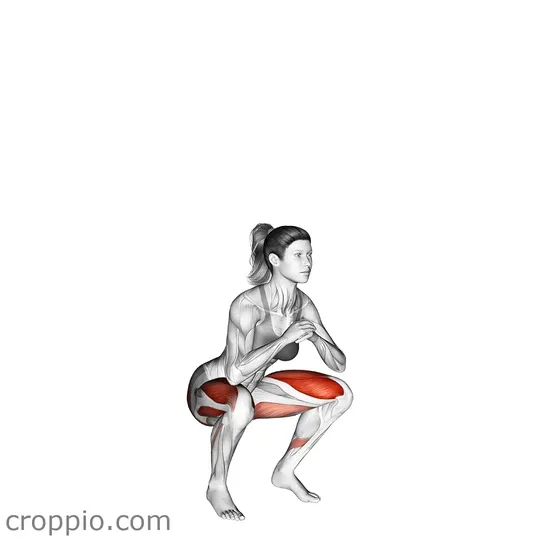Squat Jump

Muscles Involved
The squat jump is a powerful plyometric exercise that primarily targets the lower body, engaging several key muscles. The main muscles worked during a squat jump include the quadriceps, hamstrings, and gluteus maximus. These muscles are responsible for the squatting motion and the explosive upward force during the jump. Additionally, the calves, specifically the gastrocnemius and soleus, play a significant role in the push-off phase. Secondary muscles involved include the core muscles, such as the rectus abdominis and obliques, which help stabilize the body throughout the movement. The engagement of these muscles not only improves strength but also enhances athletic performance and explosive power.
Top Mistakes
- Improper knee alignment: Allowing the knees to cave inward during the squat can lead to injury.
- Inadequate squat depth: Failing to lower the body adequately reduces the effectiveness of the exercise.
- Using arms ineffectively: Not utilizing your arms for momentum can diminish your jump height.
- Lack of core engagement: Failing to tighten your core can lead to poor stability and form.
Execution Tips
- Start with feet shoulder-width apart, ensuring your weight is distributed evenly.
- Sit back into the squat while keeping your chest up and your back straight, and lower your thighs parallel to the ground if possible.
- As you reach the bottom of the squat, explode upward, pushing through your heels while swinging your arms upward for added momentum.
- Land softly on the balls of your feet, then roll back to your heels to absorb the impact, maintaining a slight bend in your knees upon landing.
Workouts
Incorporating squat jumps into a workout routine can enhance cardiovascular fitness, strength, and power. A typical workout could include 3 to 4 sets of 10 to 15 repetitions, allowing for 1-2 minutes of rest between each set to recover adequately. Complementary exercises might include traditional squats, lunges, and box jumps to further target the legs and improve overall explosiveness. Adding squat jumps as part of a high-intensity interval training (HIIT) session can also boost endurance and burn calories effectively.
Conclusion
The squat jump is an excellent exercise for building lower body strength and power while enhancing cardiovascular fitness. By engaging multiple muscle groups, it not only improves physical performance but also assists in body composition goals. With proper execution and integration into a well-rounded workout routine, squat jumps can be a valuable addition to any fitness regimen, providing substantial benefits for athletes and fitness enthusiasts alike.



